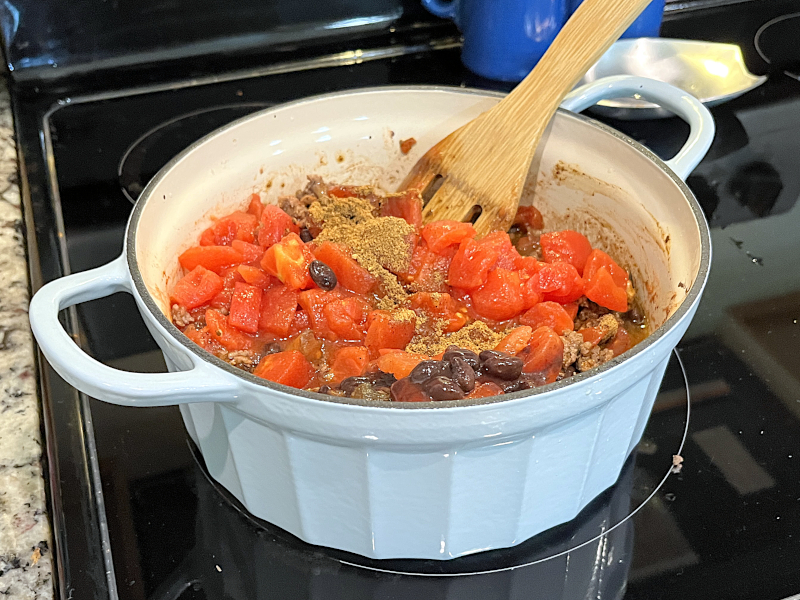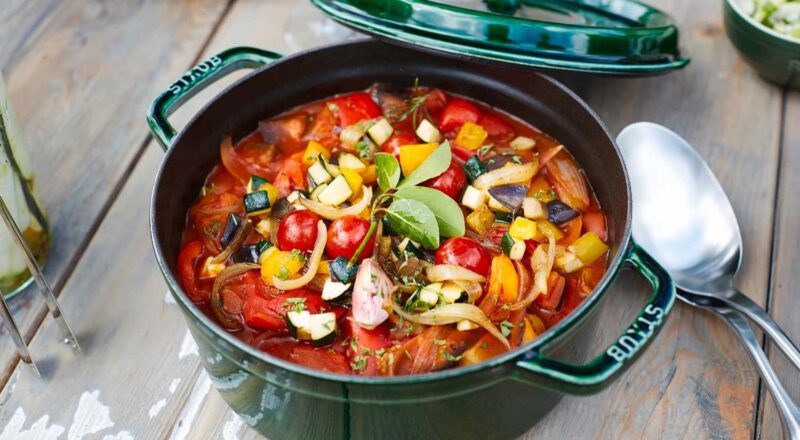Nothing compares to the satisfaction of baking your own bread, and if you’ve ever wondered how to make rye bread in a dutch oven, you’re in the right place. Dutch ovens are a terrific piece of technology for baking bread because they retain heat and distribute it evenly. This results in a perfect crust and soft, flavorful interior.

The Tremendous Charm of Rye Bread
Rye bread has now become a staple in many kitchens. Its profound, slightly tangy taste sets it apart from other types of bread. Using a Dutch oven makes the baking process straightforward and fun. So let’s dive into the world of rye bread, specifically how to bake one successfully in your Dutch oven.

Understanding Dutch Ovens
Whether you’re new to baking or a seasoned baker, a Dutch oven can elevate your bread-baking skills. Their lids heavy structure maintains the perfect amount of steam for an excellent rise, which is critical for a perfect loaf. Learn more about Dutch ovens and why they are so effective in bread-making.
The Best Rye Flour for Your Bread
Choosing the right flour is essential. Rye flour types vary, mainly light, medium, and dark rye. They affect the density and flavor of your bread. Dark rye flour gives your bread a robust flavor and darker color.
Required Ingredients for Rye Bread
- 3 cups rye flour
- 1 cup all-purpose flour
- 2 teaspoons salt
- 1 teaspoon sugar
- 1 packet dry yeast
- 1 1/4 cups warm water
- Optional: Caraway seeds, molasses

Step-by-Step Guide to Making Rye Bread
Step 1: Activating the Yeast
In a small bowl, mix the warm water with a teaspoon of sugar. Pour in the dry yeast and let it sit until it becomes frothy. This shows that the yeast is active and ready to use.
Step 2: Mixing the Dry Ingredients
In a large mixing bowl, combine the rye flour, all-purpose flour, and salt. Whisk these together to ensure they are well-mixed.
Step 3: Combining Wet and Dry Ingredients
Create a little well in the center of your dry ingredients and pour the activated yeast mixture into the well. Mix this until the dough starts coming together.
Step 4: Kneading the Dough
Turn the dough onto a floured surface and knead it until it becomes smooth and elastic. This usually takes about 10 minutes.
Step 5: First Rise
Place the kneaded dough in a lightly oiled bowl, cover it with a damp cloth, and let it rise in a warm place for about 1 to 2 hours or until doubled in size.
Step 6: Shaping the Dough
Once the dough has risen, punch it down and shape it into a round loaf. Place this loaf onto a piece of parchment paper.
Step 7: Preheating the Dutch Oven
While your dough is rising for the second time, preheat your Dutch oven in the oven at 450F (230C) for about 30 minutes. Preheating the Dutch oven is crucial for getting a nice crispy crust.
Step 8: Second Rise
Let the shaped dough rise again for about 30 to 40 minutes. This helps it achieve its final shape and texture.
Step 9: Baking the Bread
Carefully place the dough into the preheated Dutch oven, either with the parchment paper or by directly placing it in the pot. Cover it with the lid and bake it for 30 minutes. After 30 minutes, remove the lid and bake for an additional 10-15 minutes until the crust is golden brown.
Step 10: Cooling the Bread
Once baked, remove your bread from the Dutch oven and cool it on a wire rack. Cutting into it too early can result in a gummy texture, so be patient!
Tips and Tricks for Perfect Rye Bread
Keeping the Dutch Oven Clean
Proper maintenance of your equipment is crucial. Heres how to keep your Dutch oven in pristine condition!
Experimenting with Ingredients
Feel free to experiment by adding ingredients like caraway seeds, nuts, or even dried fruits. This can enhance the flavor and texture of your rye bread.
Monitoring Baking Time
Keep an eye on your bread during the final stage of baking. Dutch ovens hold heat extremely well, so your bread can go from perfectly cooked to burnt very quickly.
Proper Storage
Store your bread in a bread box or tightly wrapped in a clean kitchen towel at room temperature. It typically keeps fresh for up to a week.
FAQs
What is the best type of yeast to use?
Dry active yeast works best for this recipe. It is reliable and easy to work with.
Can I use whole wheat flour instead of all-purpose flour?
Yes, you can, but it will make the bread denser. Mixing rye with all-purpose flour offers a better texture.
How can I make the crust crispier?
For a crispier crust, remove the lid during the last 15 minutes of baking.
As an Amazon Associate, I earn from qualifying purchases.

